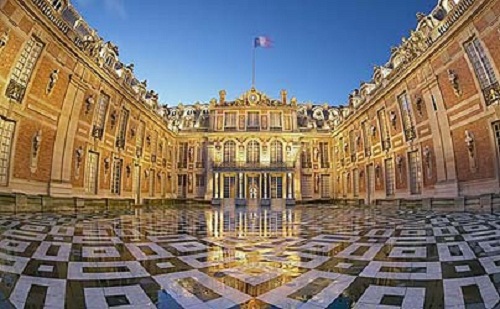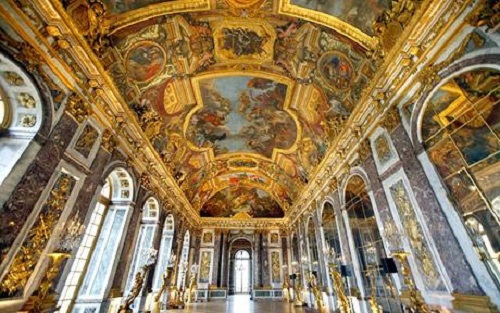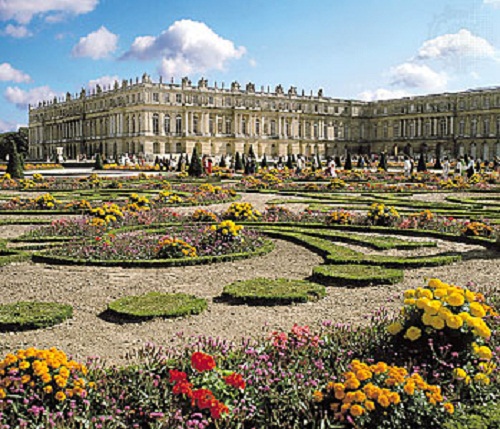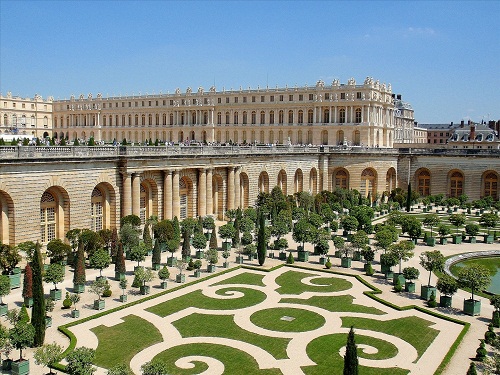If you can afford to spend your vacations in Europe, then Paris should be number one on your “traveling to European cities” list. Book everything in advance. Since Paris is one of the most beautiful and at the same time expensive cities you should spend some of your time carefully looking for the options best suitable for you, among them you should firstly consider the hotel options, though finding a holiday apartment in Paris is a way more affordable and convenient option. Our today’s tour will be one of the most interesting ones as we are going to visit one of the most famous and historical places in the world, the Palace of Versailles.

The town of Versailles is nestled only 20 kilometers away from capital Paris. The first mention about the town we get in 1038 when the name appeared in a charter of the Abbey of Saint-Pere de Chartres. Till the end of the 11th century Versailles was a country village with its castle and the church of Saint-Julien, which was very prosperous until the 13th century. But everything was destroyed during the Hundred Years War and after those tragic years only a handful of people lived there.
Versailles is an ideal place to leave the busy life of Paris and dive in tranquility and peace. Louis XIV did the same, who built this incredible chateau in which he established home and installed the government. Then Versailles was filled with marvelous gardens with spectacular flowers and trees from all over the world. A hunting lodge was built there and amazing fountains embellished the Palace. The building of chateau lasted until the death of Louis XIV in 1715. In 1722 when the King of France was already Louis XV Versailles was established as the residence of the royal family and remained so until the Revolution of 1789.

During the French Revolution, the valuable masterpieces of paintings, antiques, and other works of art that had been amassed at Versailles were transferred to the Louvre and other incredible items were moved to the National Library and Conservatory of Arts and Crafts. Most of the furniture, historians say, was sold at auction.
The design of the palace is absolutely breathtaking. The palace itself looks so rich that even if you pass by it for hundred times, still you will admiringly look at it as if it’s the first time you see that real piece of art. Every detail is considered. It’s worth visiting the Hall of Mirrors that some call Louis XIV’s most notable contribution to Versailles. The main character of this hall is the seventeen mirrored arches that reflect the seventeen arcades windows, which look out onto Versailles–equally-majestic garden. Every arch consists of twenty-one mirrors and the total amount of the mirrors is 357 in all arches. The role of this hall is very important for the French history especially in 1919 when World War I officially ended and Germany signed the Treaty of Versailles.

It’s a must to visit Chapel of Versailles, which is the fifth at the palace. The construction started in 1689 and finished in 1710. It presents a ‘tribune’ on the same level as the royal apartments, overlooking the nave, where the kings would sit while attending the mass. The architecture is a unique combination of Gothic and baroque styles vividly presented in paintings of medieval times and gorgeous pointed roof.
Originally known as the Apartment of the Planets because the seven halls of this apartment feature a painting of planet, the Grand Apartment has been King Louis XIV’s apartment. The entire place is very fascinating decorated with various paintings and colorful items but the most notable are the ceilings painted by Painter to the King, Charles Le Brun and his team of artists.

Many people will say that the most outstanding part of Versailles is its garden that is nestled in 250 acre area and is the largest palace garden in Europe. It was built in the 17th century by landscape gardener Andre Le Notre. The garden is laid out in a geometric pattern of paths, bushes, flowerbeds and trees. Le Notre also drained the swampy, sloping terrain and created a series of basins and a large canal, known as the Grand Canal. Countless fountains are dancing in the garden warmly welcoming the people. These fountains were installed to entertain the many guests invited to the lavish parties organized by King Louis XIV. There are a couple of small palaces in the garden like the Grand Trianon and the Petite Trianon. The first was luxurious palace where the king could escape the formalities of the court and arrange rendezvous with his mistress. Later King Louis XV built the smaller Palace called Petite Trianon and this again served the same purpose.


